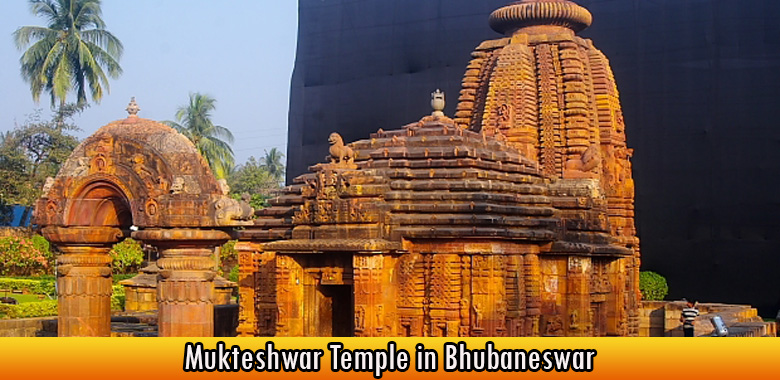
Mukteswara Temple is a 10th-century Hindu temple dedicated to Shiva located in Bhubaneswar, Odisha, India. The temple dates back to 970 CE and is a monument of importance in the study of the development of Hindu temples in Odisha. The stylistic development the Mukteswar marks the culmination of all earlier developments, and initiates a period of experiment which continues for an entire century, as seen in such temples as the Rajarani Temple and Lingaraj temple, both located in Bhubaneswar. Standing 34 feet tall, the Mukteshwar temple is one of the smallest and most compact temples in Bhubaneshwar. However, it’s famous for its exquisite stone archway, and ceiling with eight petal lotus inside its porch. A number of the carved images (including lion head motif) appear for the first time in the temple architecture.
The Mukteswar Temple is found to be the earliest work from the Somvamsi period. Most scholars believe the temple is the successor to Parsurameswar Temple and built earlier to the Brahmeswara Temple (1060 CE). Percy Brown puts the date of construction of the temple to 950 CE. The presence of torana, which is not part of any other temple in the region makes this temple unique and some of the representations indicate the builders were starters of a new culture. The Somavamsi king Yayati I contributed to the building of the temple.
Religious Significance : Muktesvara means “Lord of Freedom”. The temple is dedicated to Hindu god Shiva. There are a number of sculptures of skeletal ascetics in teaching or meditation poses. Some scholars correlate the role of the temple as a center for Tantric initiation with the name Muktesvara as a possible thesis. The outer face of the compound wall has niches of Hindu deities like Saraswathi, Ganesha and Lakulisha (the fifth century founder of the Pashupata sect of tantric Saivism). The numerous images of Lakulisha are found in miniature forms within Chaitya arches, showing various mudras like yoga, Bhumispara and vyakyana wit yogapatta tied to their knees. They are accompanied by the images of the disciples. According to tradition, barren women give birth to sons if they take a dip in Madicha Kunda tank in the premises of the temple on the night before Ashokastami car festival. On the evening, the water in the tank is sold to the public.
Source – Internet
Comments
comments
